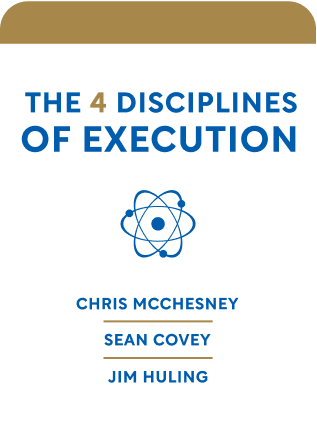

This article is an excerpt from the Shortform book guide to "The 4 Disciplines of Execution" by Chris McChesney, Sean Covey, and Jim Huling. Shortform has the world's best summaries and analyses of books you should be reading.
Like this article? Sign up for a free trial here .
Are you looking for The 4 Disciplines of Execution quotes? How can key passages help you remember the principles of 4DX?
The 4 Disciplines of Execution quotes are all about what you should be focusing on and how to stay on top of achieving your goals. These ideas are essential for success that breaks out of your operational, day-to-day rut.
Keep reading for The 4 Disciplines of Execution quotes and what they mean.
The 4 Disciplines of Execution Quotes: Top Three Passages
The 4 Disciplines of Execution explains how to actually do the things in the plans. Execution requires behavioral change, which is one of the hardest things to generate, both in yourself, your team members, and your organization. The greatest enemy of execution and behavioral change is the whirlwind—the day-to-day activities necessary to keep an organization running. It’s very difficult to make changes when you’re stuck inside the storm and completely occupied with just trying to keep things running.
This book is not about how to tame the whirlwind; it’s about how to get things done in spite of the whirlwind. You should give 4DX 20% of your time and energy. 80% should remain with the whirlwind. The whirlwind may be an enemy of execution, but that doesn’t mean it’s not important—you need these day-to-day operations to keep an organization running. These The 4 Disciplines of Execution quotes are all about the execution beyond the whirlwind.
“If you’re not keeping score, you’re just practicing.”
The first of The 4 Disciplines of Execution quotes is about Discipline 3. Discipline 3 engages your team by making the achievement of the WIG into a game they can win. Humans have a natural urge to compete, and people behave differently when they see an opportunity to win—they become highly motivated and engaged, and this drives a high level of performance.
The opposite is also true—it’s human nature not to try as hard as you can if no one’s keeping score. For example, consider this anecdote about an important high school football game. Hurricane Katrina had knocked down the scoreboard, but the field was fine, so the game went ahead. But because the fans couldn’t see the score, no one knew what was going on in the game, and no one cared about the game.
“You have to decide what your highest priorities are and have the courage—pleasantly, smilingly, unapologetically—to say no to other things. And the way you do that is by having a bigger ‘yes’ burning inside.”
The second of The 4 Disciplines of Execution quotes is about Discipline 1. In Discipline 1, choose one to three goals to focus on. Call them wildly important goals (WIGs) to remind yourself and your organization that they’re top priority. Choosing so few goals may feel counterintuitive. Do it anyway.
Senior leaders choose the WIG for an organization. Then, each team comes up with supporting WIGs. There are four rules for choosing team WIGs:
- Rule #1: Focus. No team will choose more than two WIGs.
- Rule #2: Team WIGs must directly support the overall WIG.
- Rule #3: Teams get to choose their own WIGs. Senior leaders can veto, but cannot make the final decision.
- Rule #4: All WIGs must be stated in the format “from point A to point B by deadline.”
“To achieve a goal you’ve never achieved before, you must do things you’ve never done before.”
The final of The 4 Disciplines of Execution quotes is about wildly important goals. WIG sessions have strict rules about the agenda and what’s allowed to be discussed, but they still inspire a lot of creativity. Coming up with weekly commitments and identifying problems generates new ideas. Every team member has to problem solve and help their team.
For example, Towne Park, a valet service, had a WIG of increasing customer satisfaction. They wanted their lead measure to be vehicle retrieval time because it was highly predictive, but they weren’t convinced it was influenceable. The valets—team members—were the ones who figured out how to influence the measure, not the leaders. The valets asked guests to call ahead when checking out. They strategically parked cars closer or farther according to guests’ checkout date. One location in Miami faced a literally insurmountable obstacle, a concrete wall in the middle of the garage that everyone had to drive around. The solution was to tear down the wall—another idea that came from a team member, an assistant account manager. If a top leader had told people to start tearing down walls, they never would have done it, but since the idea came from the people, and would help them win, they not only did it, they were excited about it.

———End of Preview———
Like what you just read? Read the rest of the world's best book summary and analysis of Chris McChesney, Sean Covey, and Jim Huling's "The 4 Disciplines of Execution" at Shortform .
Here's what you'll find in our full The 4 Disciplines of Execution summary :
- The 4 disciplines that can make any strategy a successful reality
- Why a great plan falls apart when you don't think adequately about execution
- The 6 steps you need to scale the 4DX model across an entire organization






